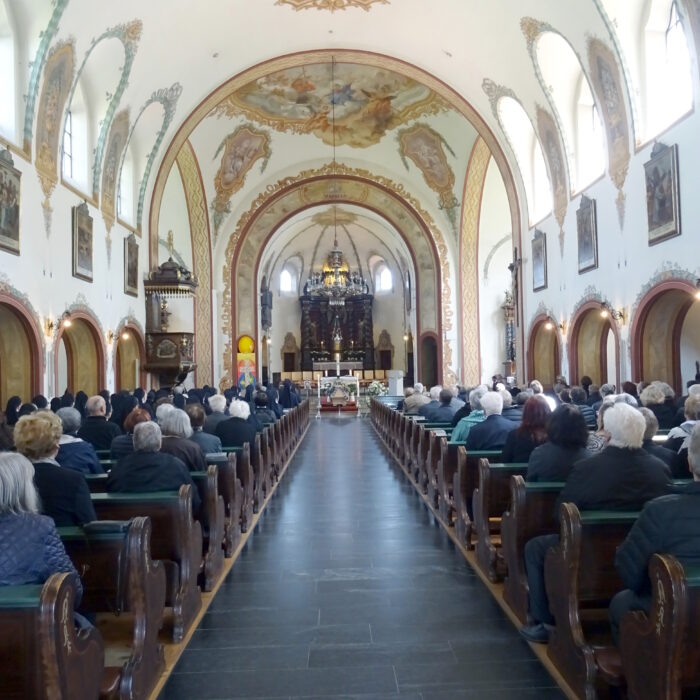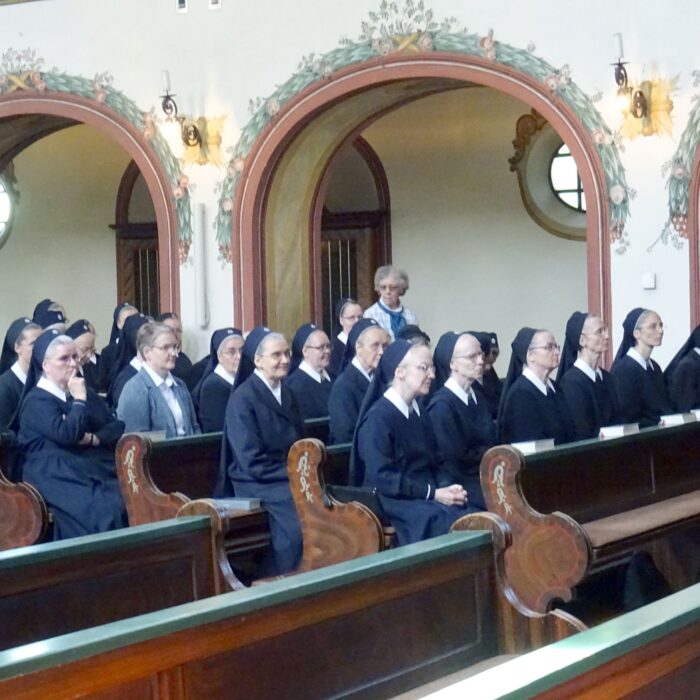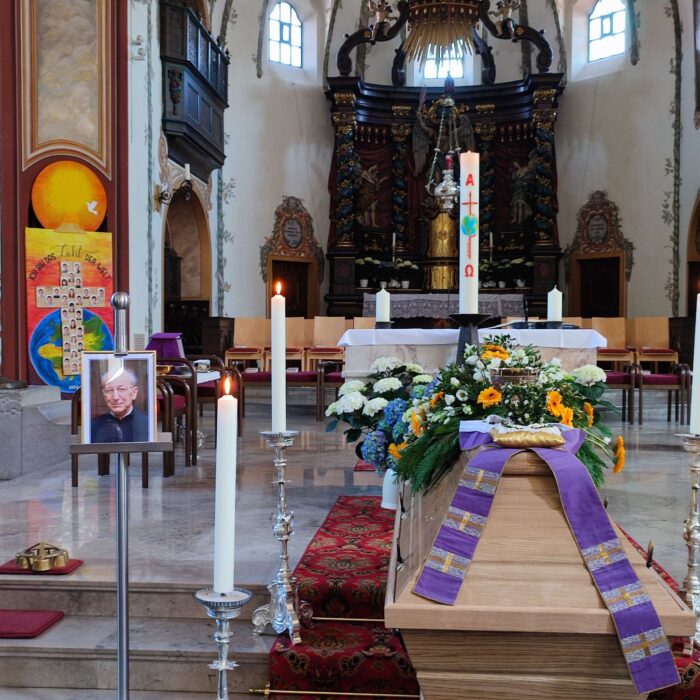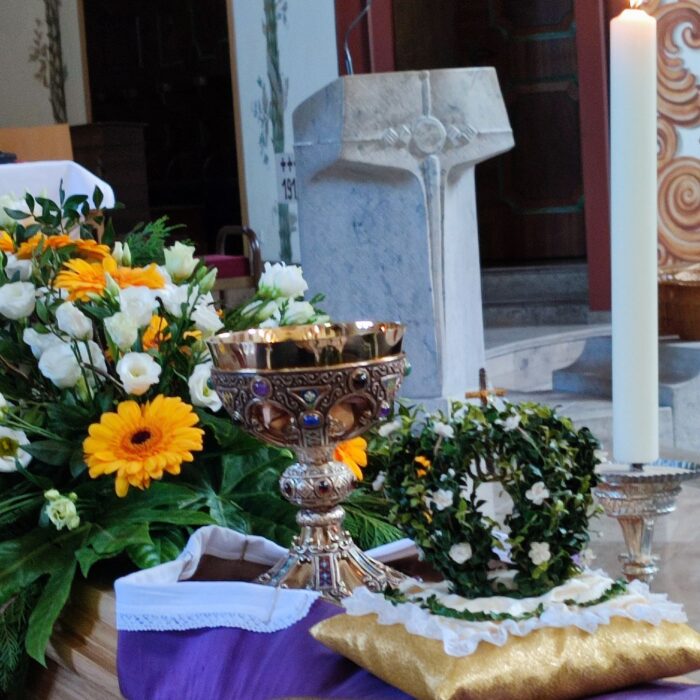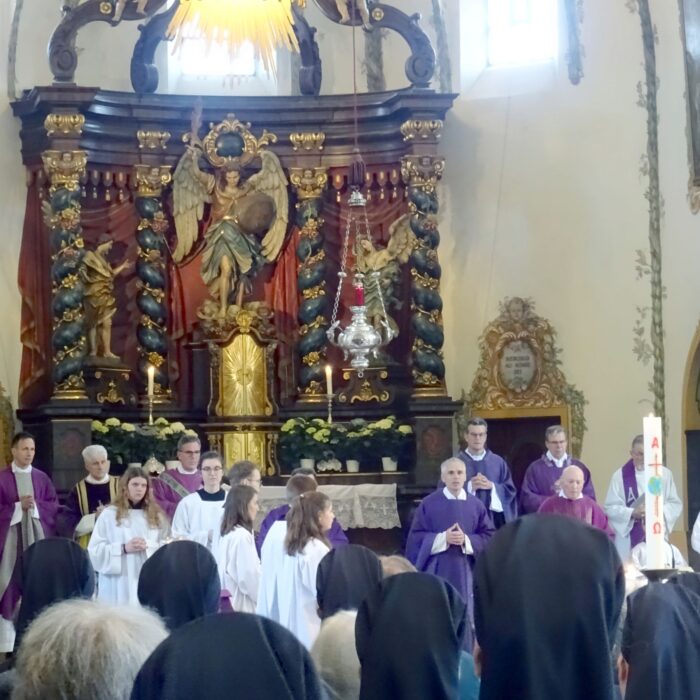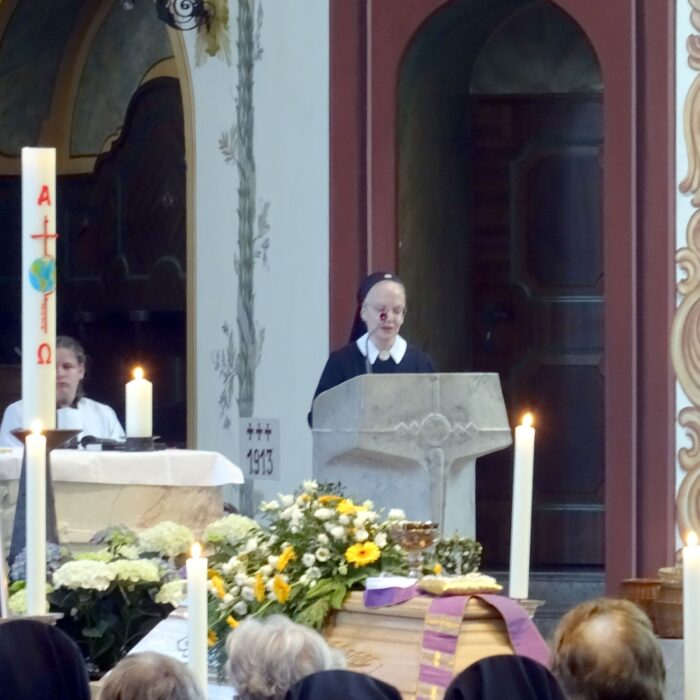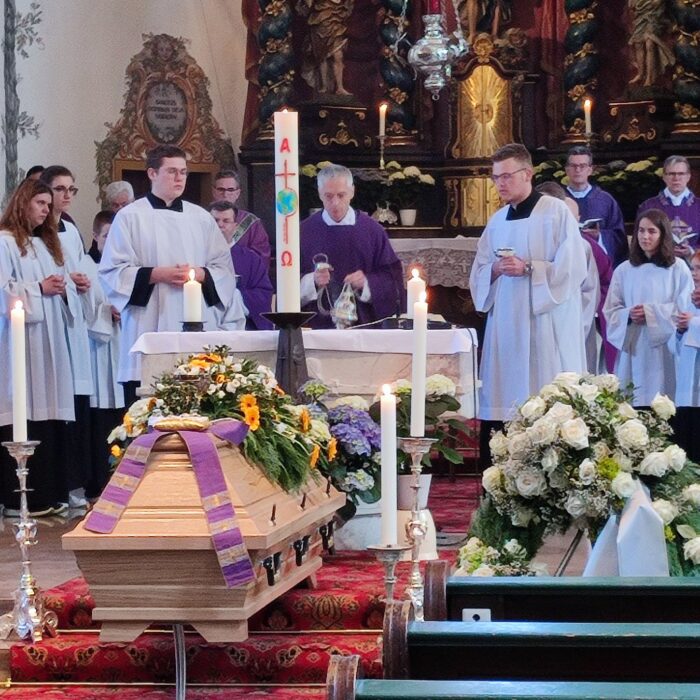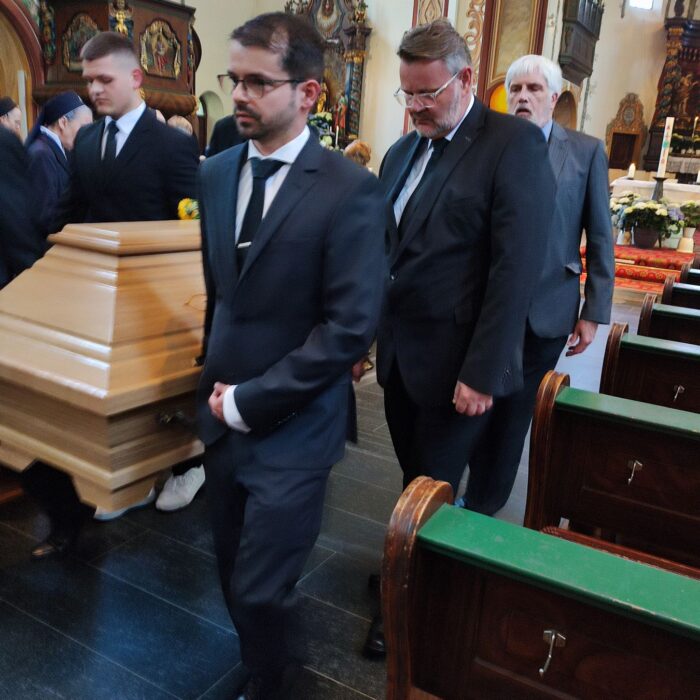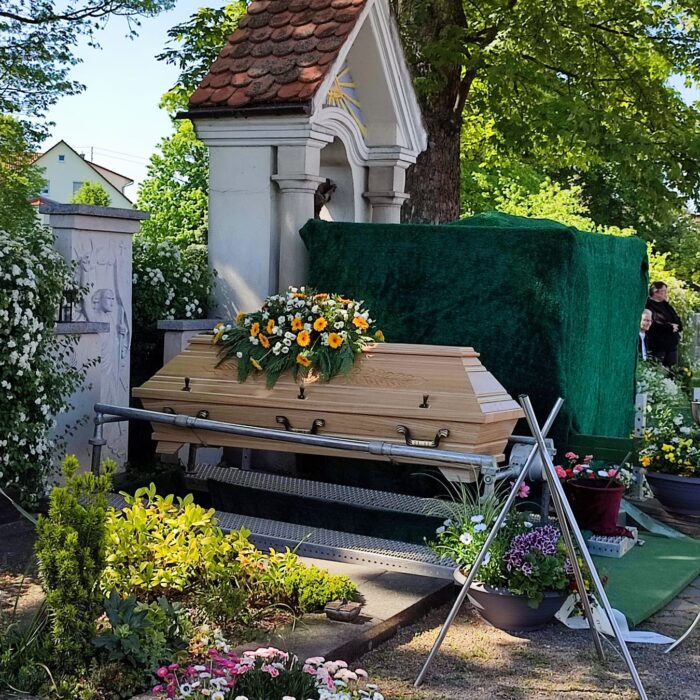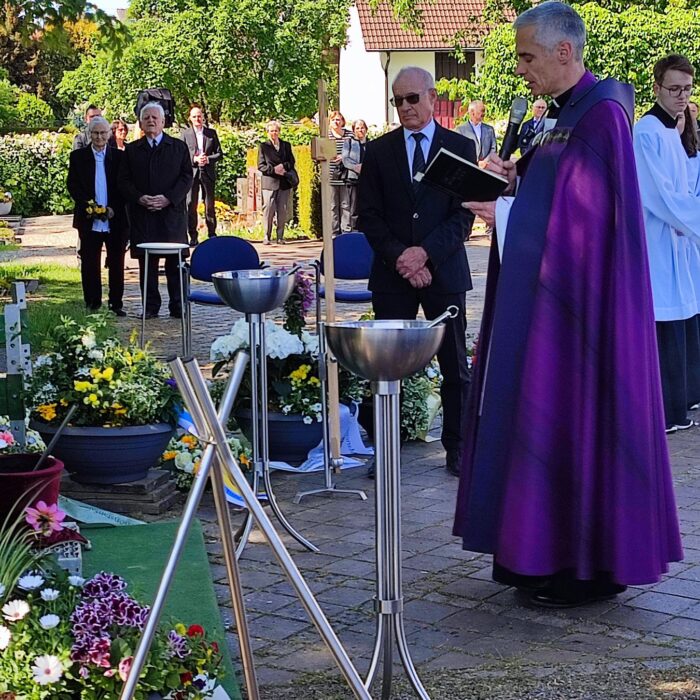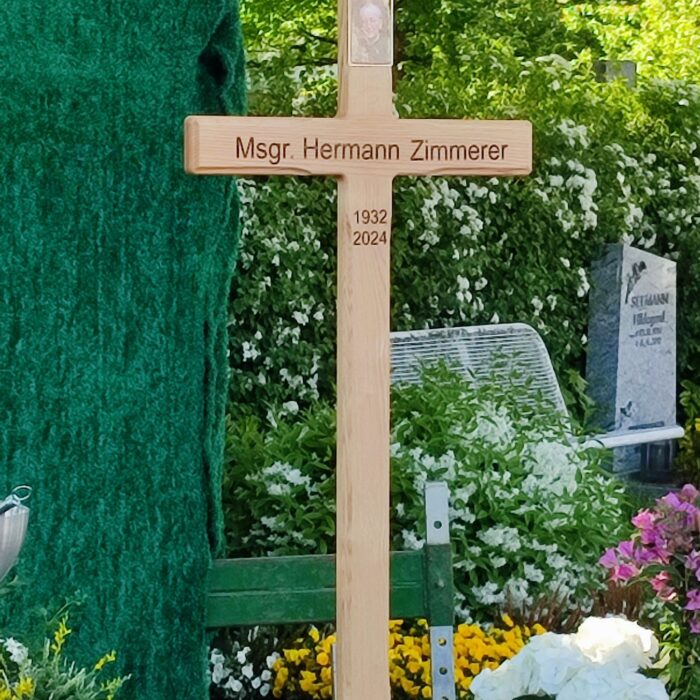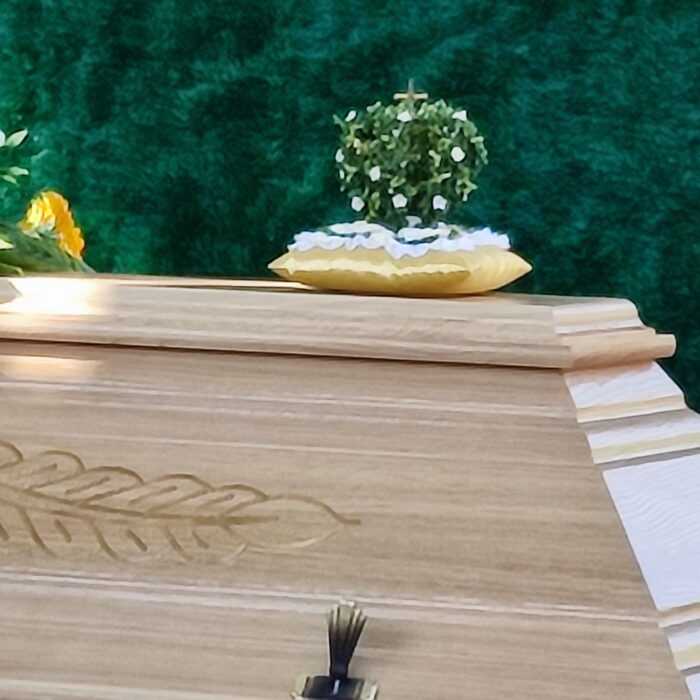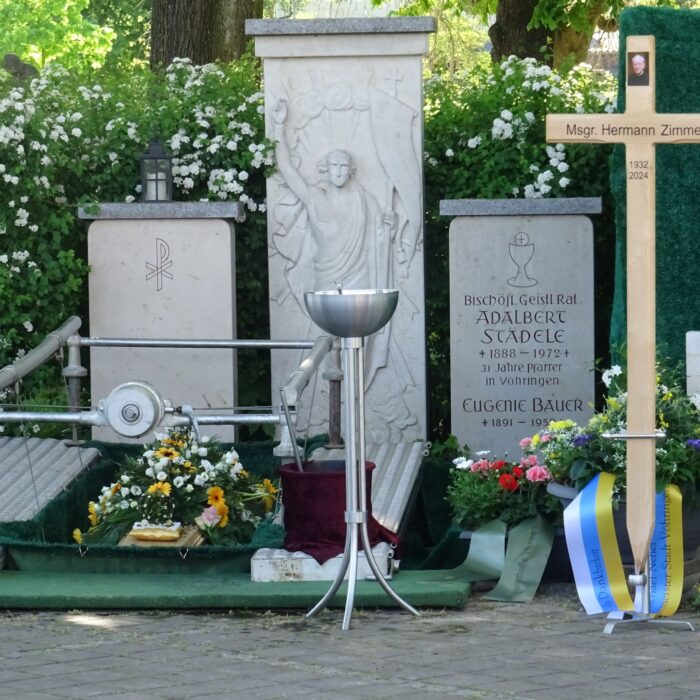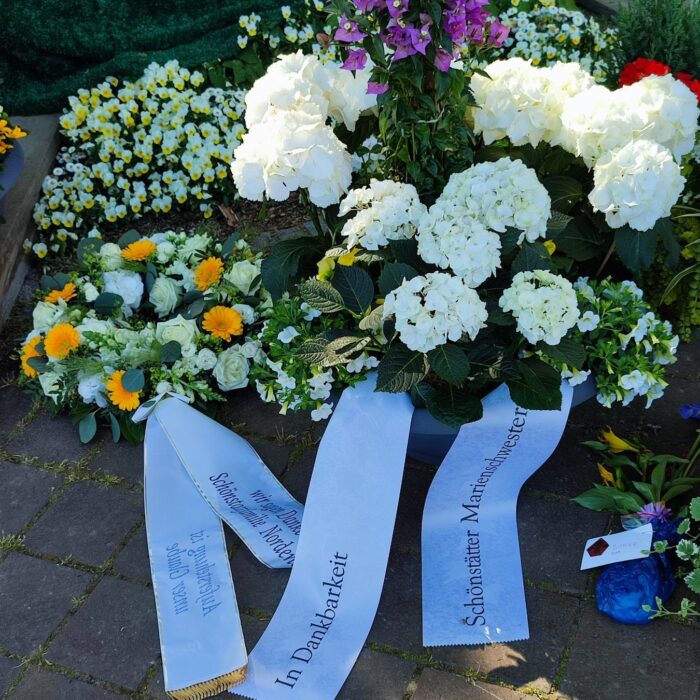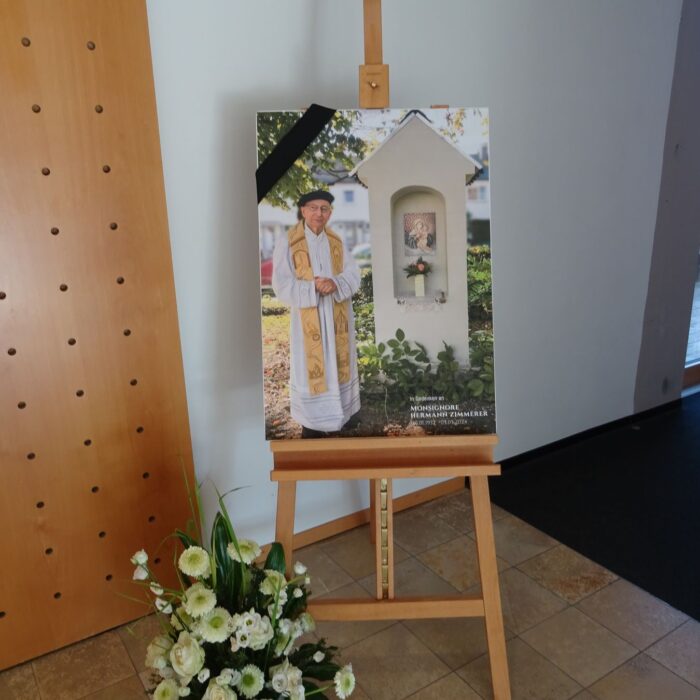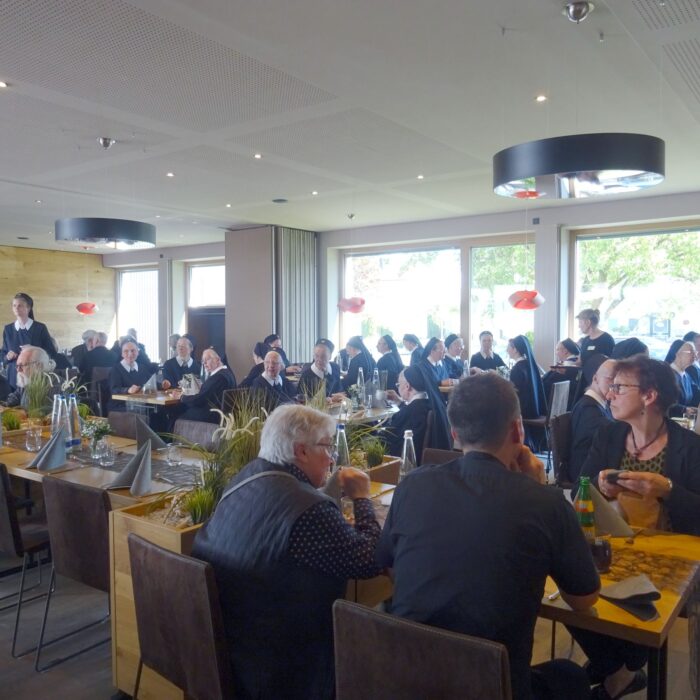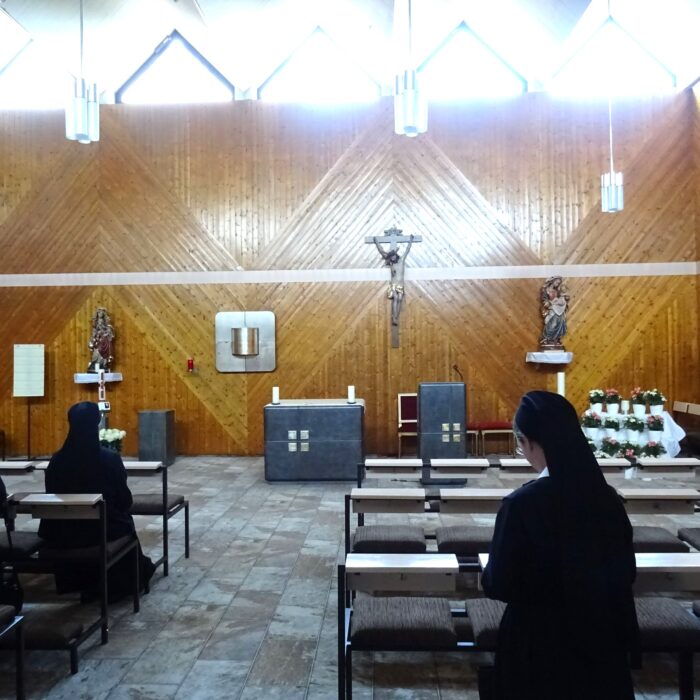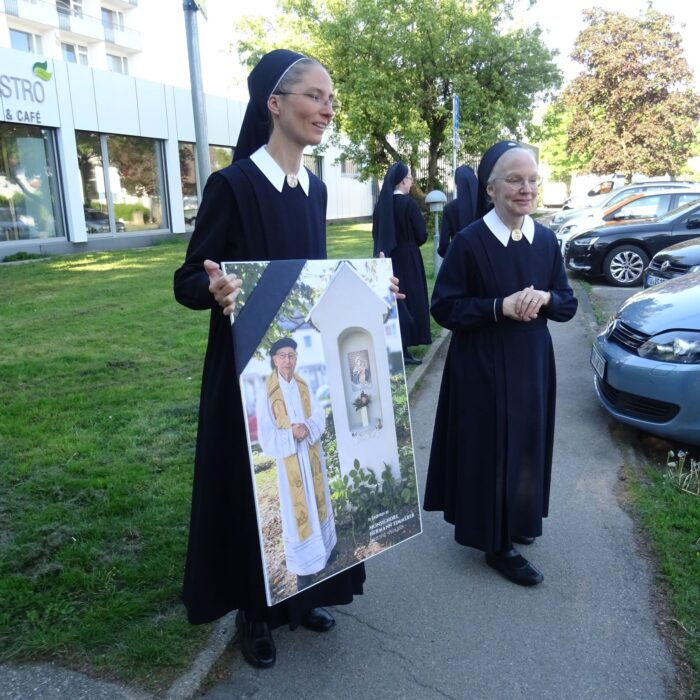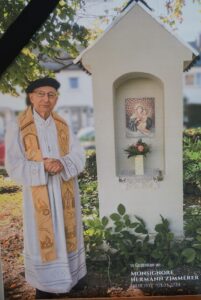
Funeral of Monsignor Hermann Zimmerer in Vöhringen on May 10, 2024
On May 3rd, at the beginning of this Marian month, Monsignor Hermann Zimmerer went home to the glory of the risen Lord.
He was the general director of the International Secular Institute of the Schoenstatt Sisters of Mary for 22 years and during these years he tirelessly supported and gave generously to our institute with his wealth of talents.
We remained connected to him with great gratitude and appreciation beyond his term of office, as Sister M. Joanna Buckley expressed in her words at the funeral service.
At 1 p.m., approximately 75 Schoenstatt Sisters of Mary from all over Germany gathered in the parish church of St. Michael in Vöhringen, Germany. Monsignor Zimmerer was baptized in this church 92 years ago. His coffin was laid out in front of the high altar, surrounded by festive floral decorations. His chalice and the customary (Primizkrone in German),* wreath crown received at his ordination lay on the coffin, bearing witness to the deepest secret of his priestly life.
During the praying of the rosary, which Monsignor Zimmerer prayed countless times throughout his life, we commended him to the Blessed Mother and prayed for his eternal rest in the glory of heaven. In the meantime, the entire church was filled with many persons who wanted to accompany him on this last earthly journey and say goodbye to him.
(click photos to enlarge)
“Precious in the sight of the Lord is the death of his righteous ones.”Psalm 116
“A pious priest, Monsignor Hermann Zimmerer, has passed from us. We mourn the loss of a good shepherd who gave us an impressive witness of faith and faithfulness. He was precious in our sight and in the sight of the Lord, who now called him to himself. …
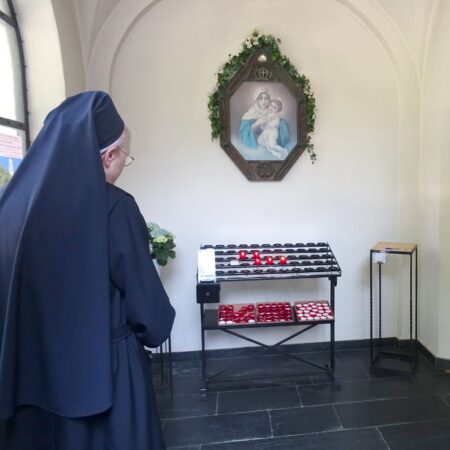
Monsignor Zimmerer was a great devotee of Mary, who was warmly attached to the Mother of Jesus. The parishioners in Vöhringen can still remember that in every sermon he never failed to establish a connection with the Blessed Mother and to encourage believers to venerate the Mother of God. Monsignor Zimmerer’s Marian piety was impressive and convincing and an essential feature of his strength of faith. …
We appreciated his sermons here in Vöhringen and I think that it was no different for the Schoenstatt Sisters and also for the believers in the parishes of Nordendorf and Ellgau, where he preached the Gospel and administered the sacraments for 28 years. …
Monsignor Zimmerer was ready to take into consideration the spirit of the times. He had a keen sense of where trials and tribulations begin, and where we as Christians must counter with a clear answer, especially in our time. He did it fearlessly and was always very aware of current happenings.
Personally, I remember fondly the conversations with him over the last 10 years. Nothing escaped him regarding developments in the church and society. He always had a clear and intelligent opinion. I often thought to myself: If Monsignor sees it that way, it is a reliable orientation or a helpful confirmation. …
The final chord of his life reflects to us his priestly self-image as a servant of God, endowed with apostolic zeal. Psalm 116 continues with these words:
“ I want to offer you a sacrifice of thanksgiving.”
Monsignor Zimmerer has offered the sacrifice of thanksgiving – the Holy Eucharist – for us, for the Church, for over 67 years. He administered the sacraments to the people of God and thereby sanctified himself. …”
After the festive service, we gathered in the old cemetery in Vöhringen. Monsignor Hermann Zimmerer was buried in the priest’s crypt. It was a moving moment when the priest placed Monsignor Zimmerer’s wreath crown from his ordination on the coffin, a sign of his priestly loyalty until death.
While the numerous participants said goodbye in person at the grave after the official prayers, we Sisters of Mary sang one song after the other, and some Schoenstatters from Vöhringen and the Diocese of Augsburg joined in.
Afterwards we were invited to the Caritas Center for refreshments. Here, too, we felt the warm connection between the residents and Monsignor Zimmerer. He was the soul of the house, “goodness personified”, and for many people a companion on the last stage of their life.
Father Dean Martin Straub testified:
“Monsignor Zimmerer was a person who had grown old with the residents. For the residents and employees, he was a priest who they knew was in their midst and whom they could always find at home. He did not simply retire, but rather offered priestly services as best he could during his last years, that many were able to deepen their faith in old age and many also died a blessed death. …
The gospel began with the
Words of Jesus: “I am the way, the truth and the life.”
Monsignor believed the words of the Lord; he knew that no one comes to the Father except through Jesus. For this reason, Monsignor Zimmerer walked the path with Mary, the path that leads to Jesus holding the hand of Mary. He fearlessly preached and defended the truth, and he has now finally found life in the Holy Trinity.
Philip said to Jesus at that time:
“ Lord, show us the Father, that is enough for us.”
The answer that Jesus then gave will now become fully apparent to his faithful priest, Monsignor Hermann Zimmerer:
Whoever sees me also sees the Father. Amen.”
* Primizkrone: The wreath crown from the ordination of a priest
The wreath crown from the ordination of a priest in Germany is comparable to a wedding crown. Other interpretations of the priestly crown see it as a sign of virginity. The crown is well documented in Bavarian and Austrian dioceses in the mid-19th century. The liturgical use of the wreath crown varied. Sometimes the new priest wore it during the procession (perhaps the mother placed the crown on her priest’s son’s head at the church entrance). Sometimes a girl – in German called the “Primizbride” – carried the crown on a pillow in the procession. Sometimes the new priest wore it throughout Mass on his head. The nature of the crown depended on local custom. It was usually around 12 cm high, made of wire, depending on the occasion. Sometimes the decoration of the wreath crown showed what anniversary the priest was celebrating, for example it was decorated with green on the ordination day, silver on the 25th jubilee, or gold on the 50th jubilee. Decorations could include artificial flowers, ears of wheat, or grapes.
